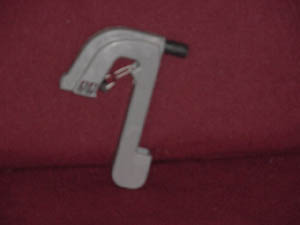

After nearly Twenty years, the Kellerscope Foundation headed by Stacey Burke and Jessica Keller has completed their amazing invention, making a gigantic contribution to the scientific community in the field of Astronomy. The product: the Kellerscope, the most sophisticated, accurate, and powerful telescope system ever invented and what's even more amazing is that this telescope is only slightly larger than your hand. That is, the hand of an adult! The two renowned Scientists spent the last twenty years researching, designing and gathering the billions of dollars in grants from various government funds and private organizations to produce the Kellerscope.
The study of Astronomy has been practiced for hundreds of years and has proved to be quite revealing in building an understanding of how our universe works. The main limitation in doing accurate, scientific observation and testing is that Astronomers are mainly confined to Earth's surface. They do most of their observing from great distances. Upon the invention of the telescope, scientists were able to get a better, more detailed look at the heavens. In the late 1500's, a Dutch spectacle maker named Johannes Lippershey invented the first telescope. The first known user of this profound invention to study the universe was Galileo Galilee. Since the original invention, telescopes have become more precise and powerful through technology and modification.
Telescopes are quite complex, but they operate on two basic functions: Collecting Power and Resolving Power. The Collecting Power of a telescope is its ability to collect more light. A lens or mirror is the main device in gathering light from Space. The bigger the collecting surface, the more light that can be gathered. Resolving Power means the telescopes ability to increase the detail within all the light. Just like eyeglasses help a person see with greater detail, a telescope acts like super-power eyeglasses that can collect more light and show details in the sky more clearly.
The Twin Keck telescopes on the summit of Mauna Kea in Hawaii are the worlds largest optical telescopes. They each have mirrors 10 meters in diameter making them the biggest collecting power telescopes that allows scientist to see even the dimmest objects in space. So, in the field of telescopes, it was believed that bigger is better, until now. The Kellerscope is even more powerful than the Twin Kecks, yet it fits in your hand. How can that be? We'll tell you how it works!
Burke and Keller have designed a system that communicates with the Kellerscope from space. There are one hundred satellites orbiting our solar system with mirrors one hundred meters in diameter. That's ten times the collecting power of the Twin Kecks. They are controlled by intelligent computers from Earth in the form of a remote control. The Kellerscope user can program the satellite to a particular degree and direction in space, the mirrors move, collect the light and record the image. The image recorded can be a still picture or motion. The satellite computer then transfers the image into a laser and sends it directly to the Kellerscope user. The Kellerscope picks up the laser and is then transferred back into the original image which can be viewed through the eyepiece. But that's not all it can do. "The Kellerscope is adaptable to computers, printers, and widescreen projections. It can store thousands of images on one cartridge named Burkers, which are replaceable. There is an adapter that fits all computers where the Burker can be loaded onto. This allows astronomers to study, compare and share their research more easily than ever before.", explains Burke. "We hope to have more on the market, but we can't afford to send anymore satellites into space just yet. We were anxious to finish the project and decided that only one hundred will have to do for now. Keller and I are devising a program that will allow Kellerscope users to reserve a time slot for communication with the mirror satellite. At the moment, we will test assigning four Kellerscopes per satellite. This way we can quadruple the amount of Kellerscopes for Astronomers to four hundred!", Burke continues. "It's a beautiful day in the field of Astronomy. Now we just wait to see the advances in our understanding of Astronomy to boom. We are certainly proud and anticipate the results.", says Keller.